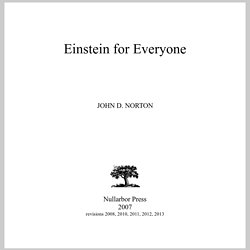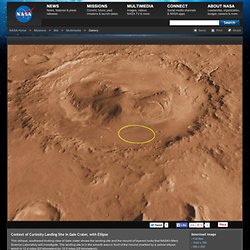

NATIONAL PARKS. Einstein for Everyone. Einstein for Everyone Nullarbor Press 2007revisions 2008, 2010, 2011, 2012, 2013 Copyright 2007, 2008, 2010, 2011, 2012, 2013 John D.

Norton Published by Nullarbor Press, 500 Fifth Avenue, Pittsburgh, Pennsylvania 15260 with offices in Liberty Ave., Pittsburgh, Pennsylvania, 15222 All Rights Reserved John D. An advanced sequel is planned in this series:Einstein for Almost Everyone 2 4 6 8 9 7 5 3 1 ePrinted in the United States of America no trees were harmed web*bookTM This book is a continuing work in progress. January 1, 2015. Preface For over a decade I have taught an introductory, undergraduate class, "Einstein for Everyone," at the University of Pittsburgh to anyone interested enough to walk through door.
With each new offering of the course, I had the chance to find out what content worked and which of my ever so clever pedagogical inventions were failures. At the same time, my lecture notes have evolved. This text owes a lot to many. I i i. The problem with physics › Opinion (ABC Science) In Depth › Analysis and Opinion Most physicists and students have lost sight of the fact that physics is not a Divine Truth, writes Tony Rothman.

Each February, I begin the introductory electricity and magnetism course at Princeton University by telling my students that the material we will cover during the semester provides the basis for modern civilisation. Who could quibble with such an innocent statement? Without the discoveries of 19th century physicists and their successors, we could hardly imagine today's world: no electrical power grid, no televisions, no satellites, no iPads.
Physicists are justly proud of the many ways that their achievements have benefited humankind. Unfortunately, many of my colleagues — particularly those who write textbooks — present physics as a towering, seamless basilica, ignoring the gaps in our hodge-podge of skewed models. On a more blatant, if less exalted level, the force of friction makes its appearance in the first days of any first-year course. Wallpaper. Videos.

15 Gorgeous And Unusual Birds: Pics, Videos, Links, News. Palaeontology. Three New "Plutos"? Possible Dwarf Planets Found. The objects were discovered in a little studied section of the Kuiper belt, a region of the solar system that starts beyond the orbit of Neptune and extends 5.1 billion miles (8.2 billion kilometers) from the sun. Astronomer Scott Sheppard , of the Carnegie Institute of Washington, and colleagues found the bodies using the 1.3-meter Warsaw University Telescope at Las Campanas in Chile. The region of the Kuiper belt visible from Earth's Northern Hemisphere has been fairly well studied. But until recently, a lack of instruments prohibited searches from the Southern Hemisphere.
The latest survey turned up 14 new Kuiper belt objects, three of which are probably big enough to join Pluto, Eris, Ceres, Haumea, and Makemake in dwarf-planet status, the study authors say. (Related: "Pluto Gets 14 New Neighbors. " ) "I'm glad someone finally did it. (Related: "New Moon Discovered Orbiting Pluto. " ) By contrast, Pluto and Eris are both 1,450 miles (2,333 kilometers) or so wide. Astronomical Journal . Context of Curiosity Landing Site in Gale Crater, with Ellipse. Context of Curiosity Landing Site in Gale Crater, with Ellipse This oblique, southward-looking view of Gale crater shows the landing site and the mound of layered rocks that NASA's Mars Science Laboratory will investigate.

The landing site is in the smooth area in front of the mound (marked by a yellow ellipse, which is 12.4 miles [20 kilometers] by 15.5 miles [25 kilometers]). Gale crater is 96 miles (154 kilometers) in diameter and holds a layered mountain rising about 3 miles (5 kilometers) above the crater floor. The landing site contains material washed down from the wall of the crater, which will provide scientists with the opportunity to investigate the rocks that form the bedrock in this area. The landing ellipse also contains a rock type that is very dense and very bright colored; it is unlike any rock type previously investigated on Mars.